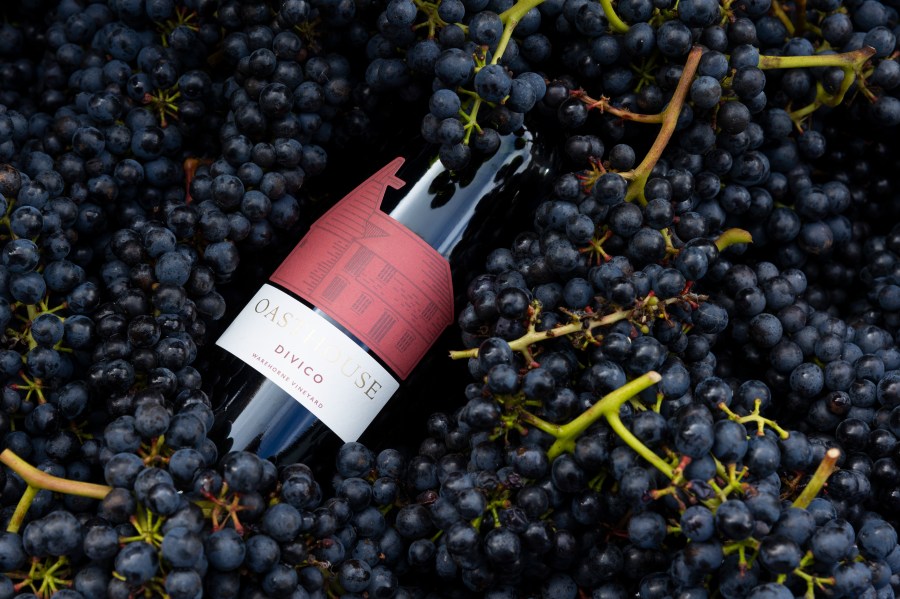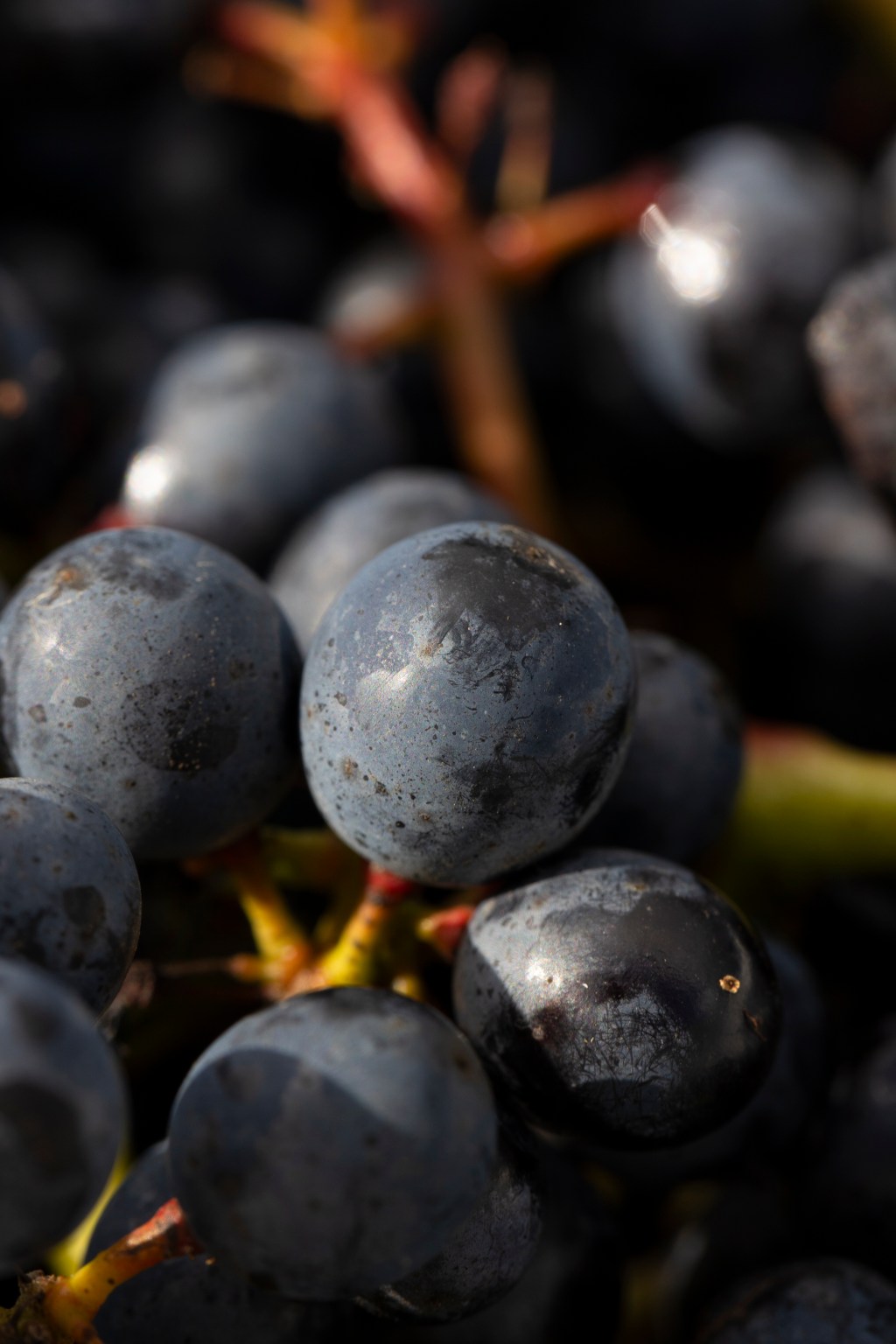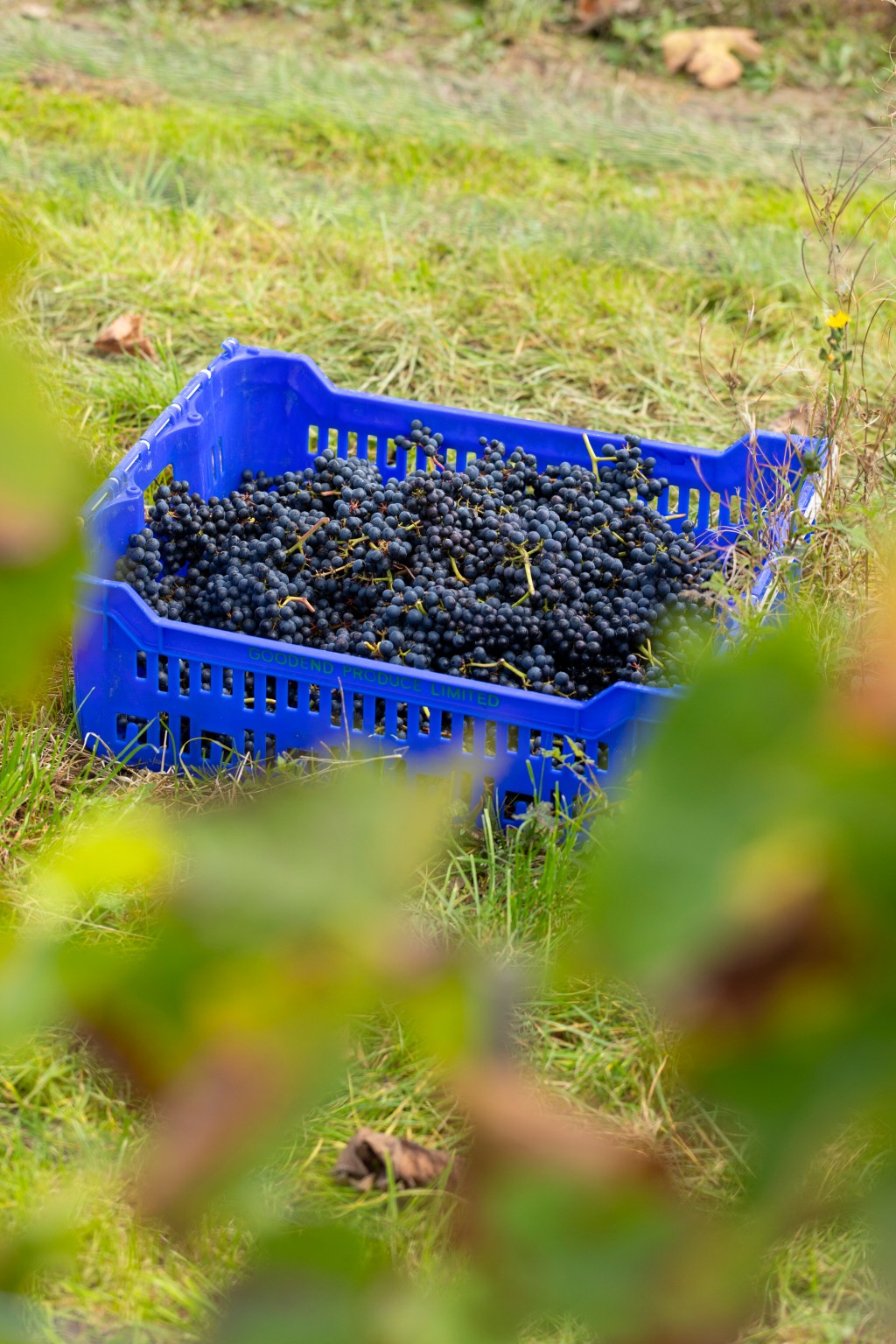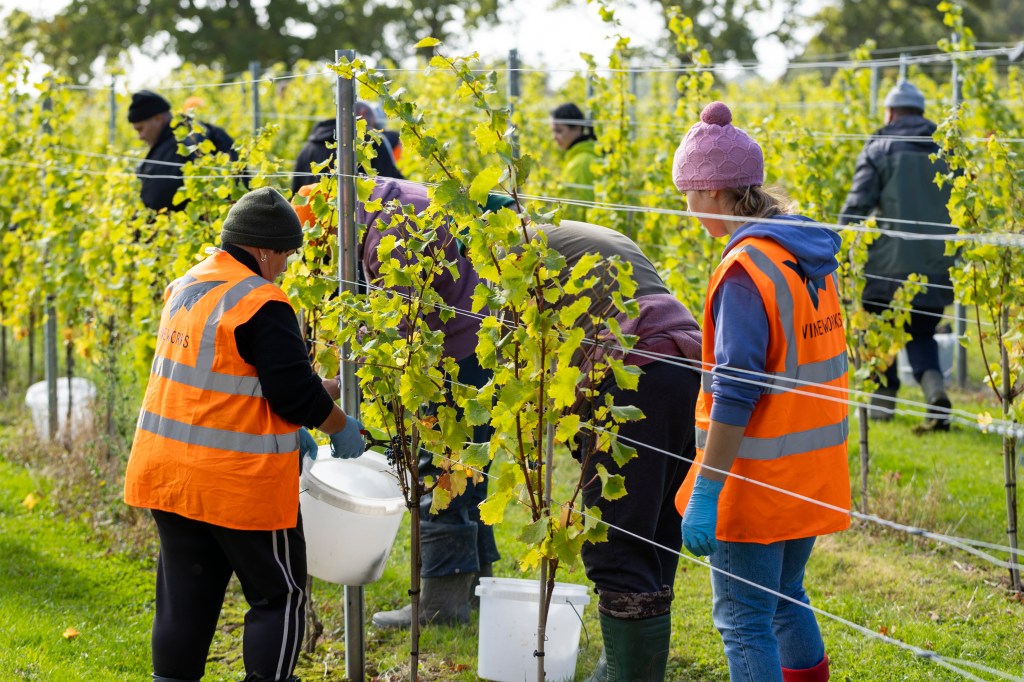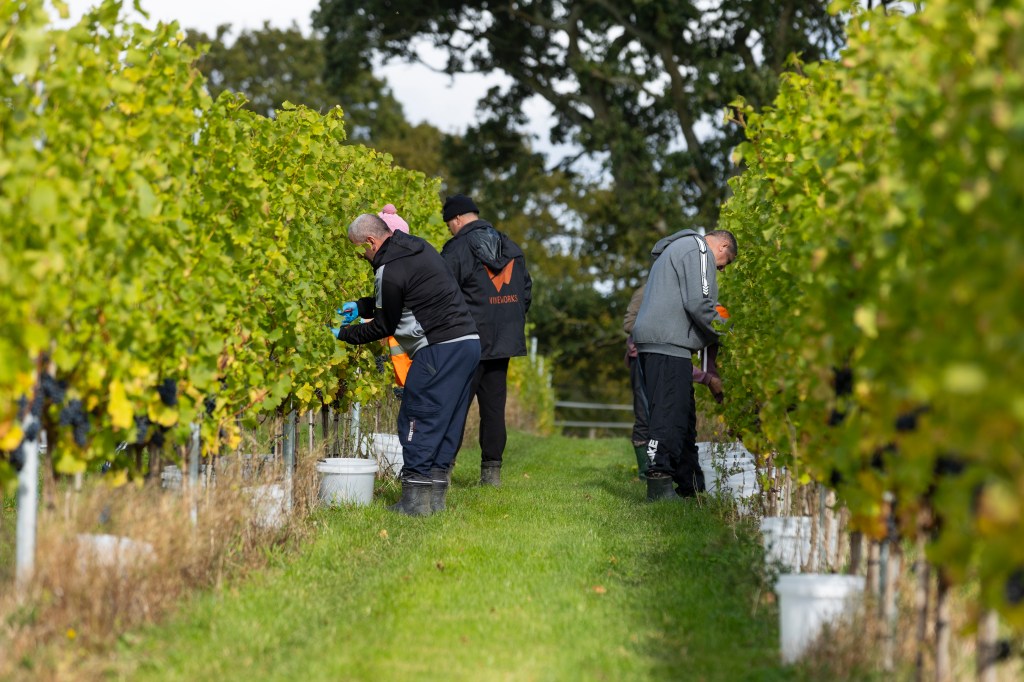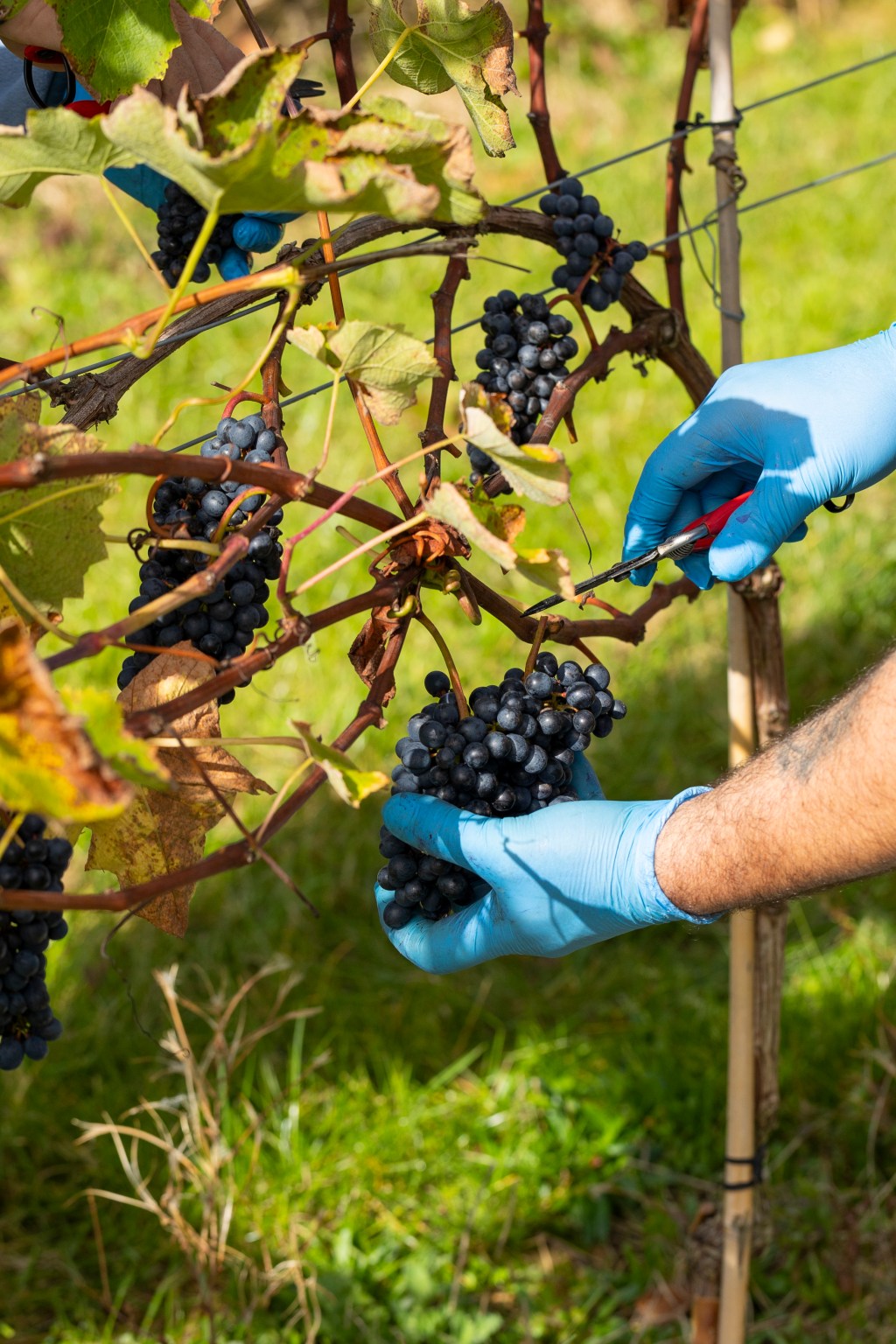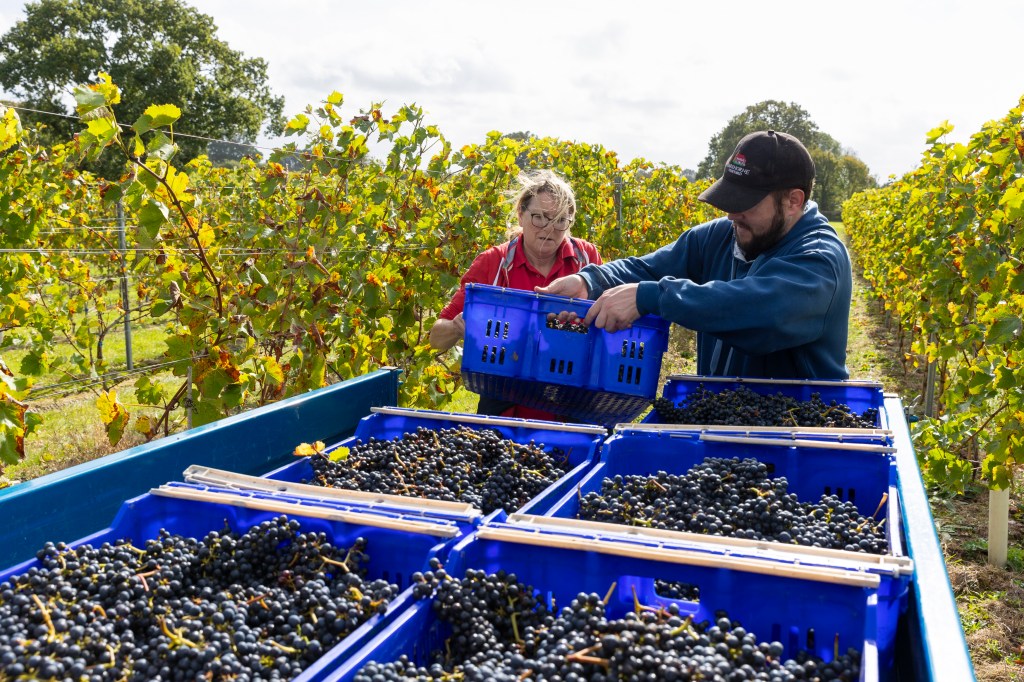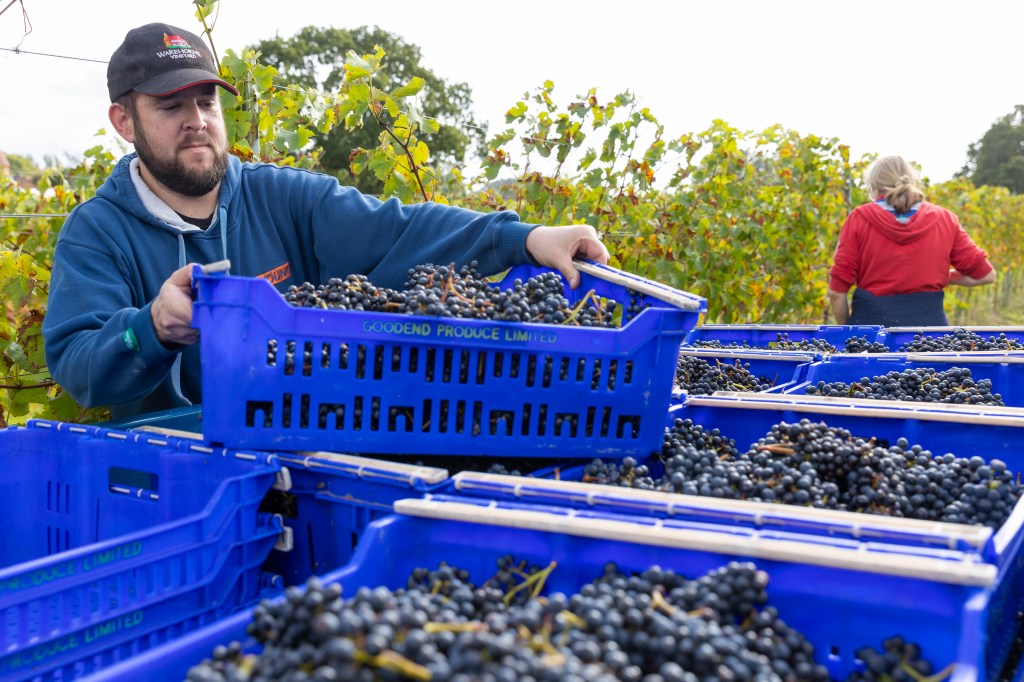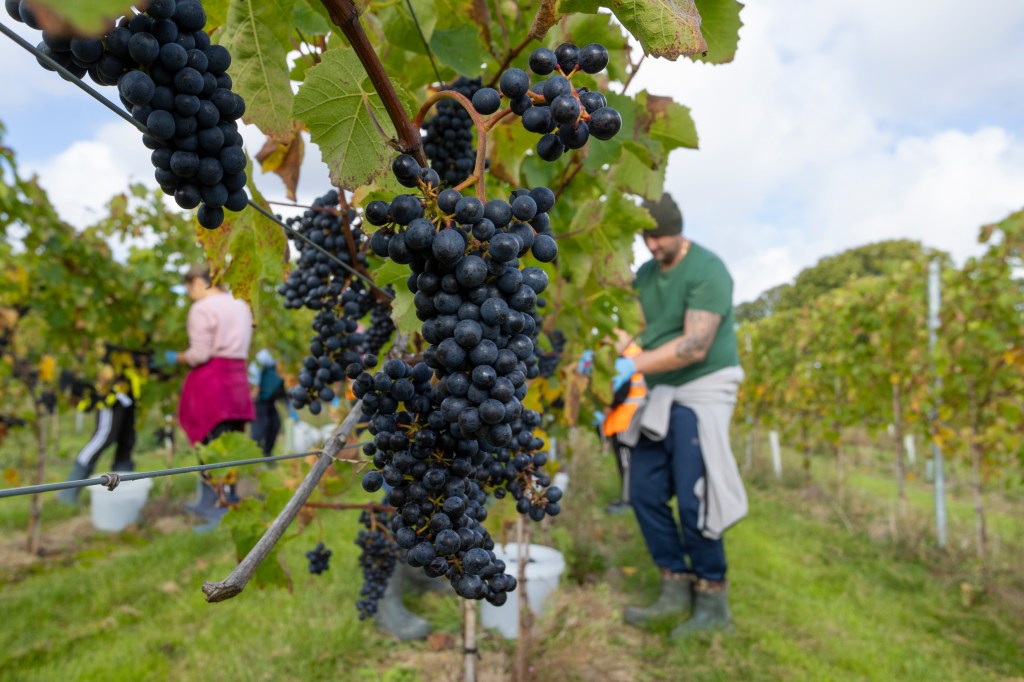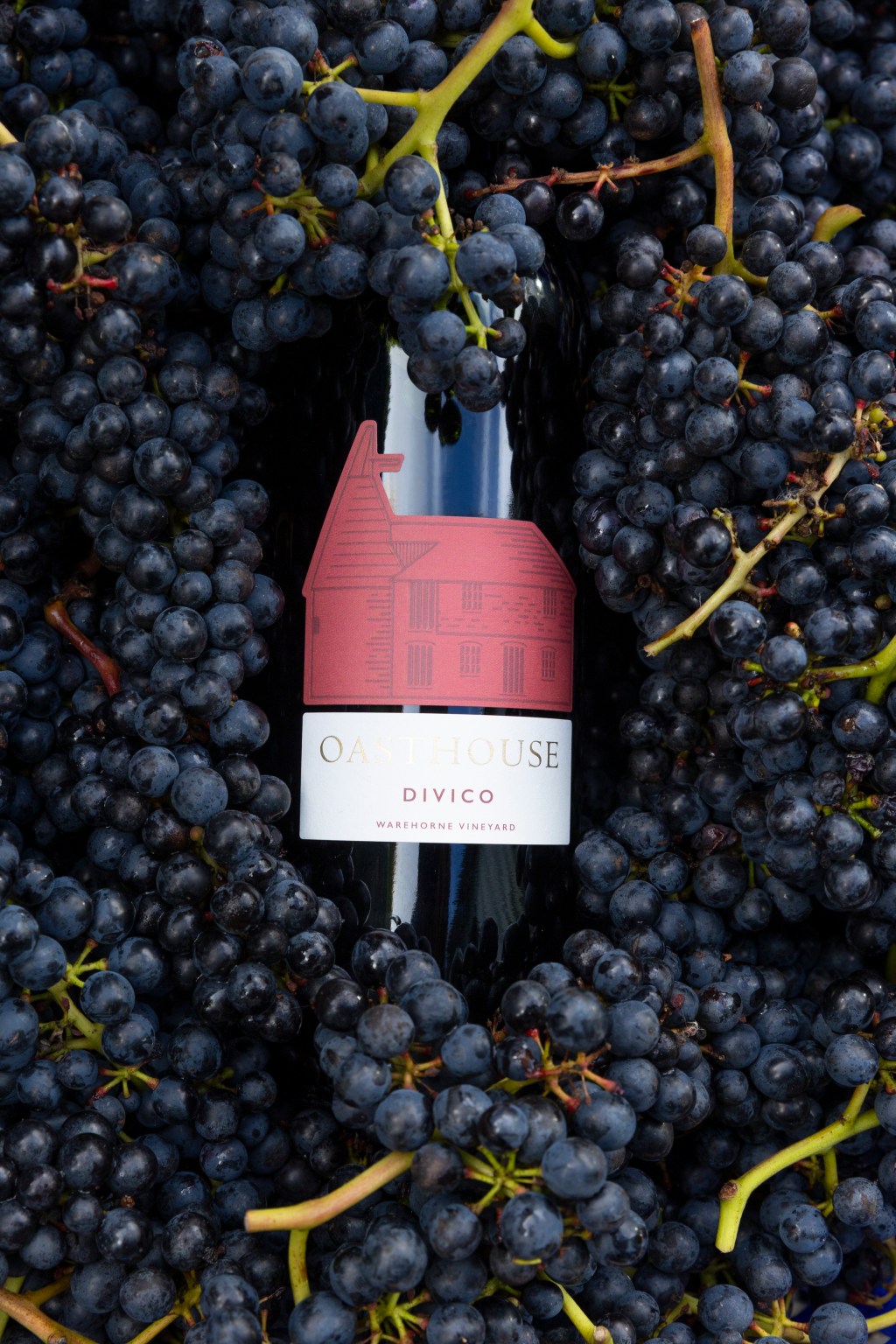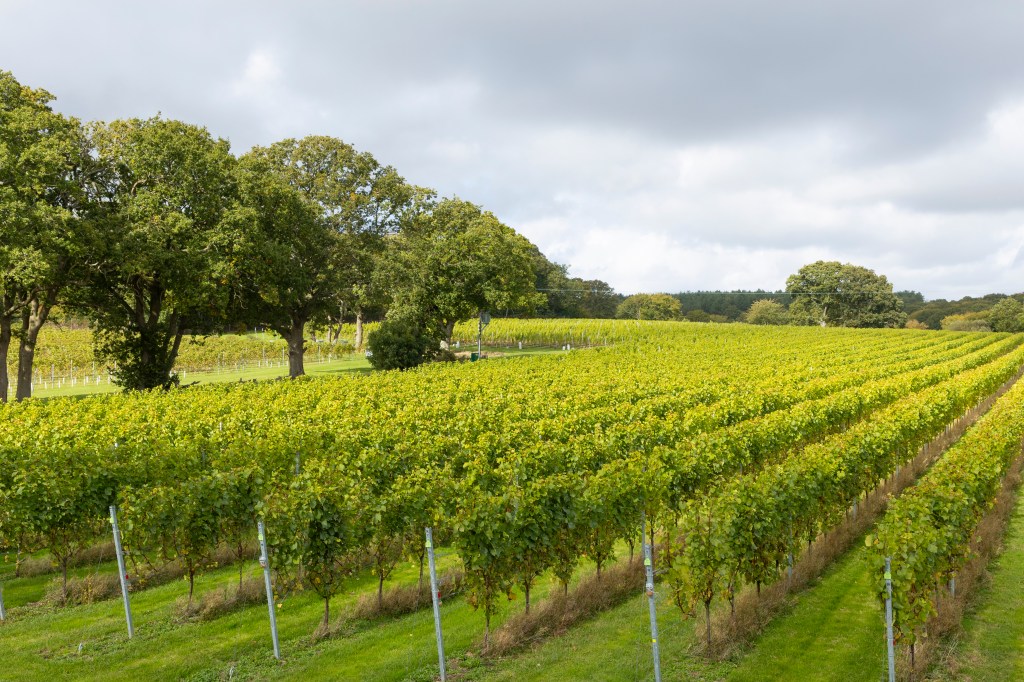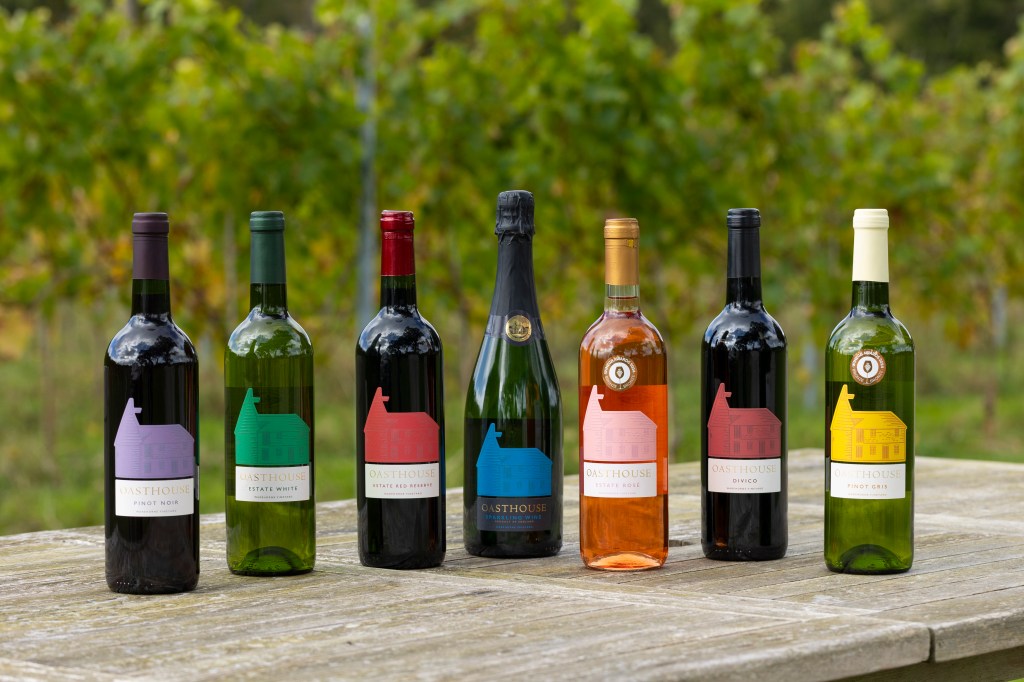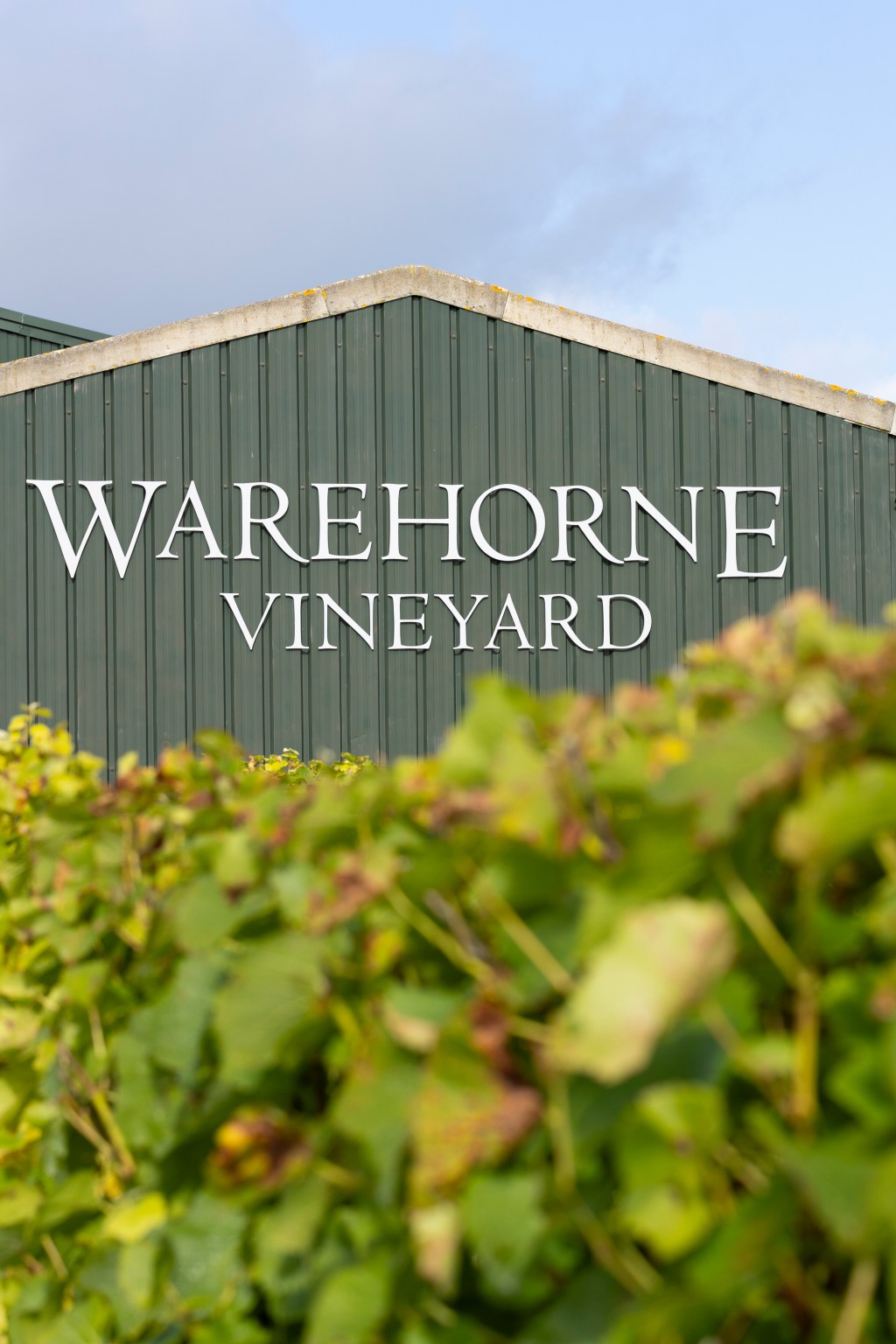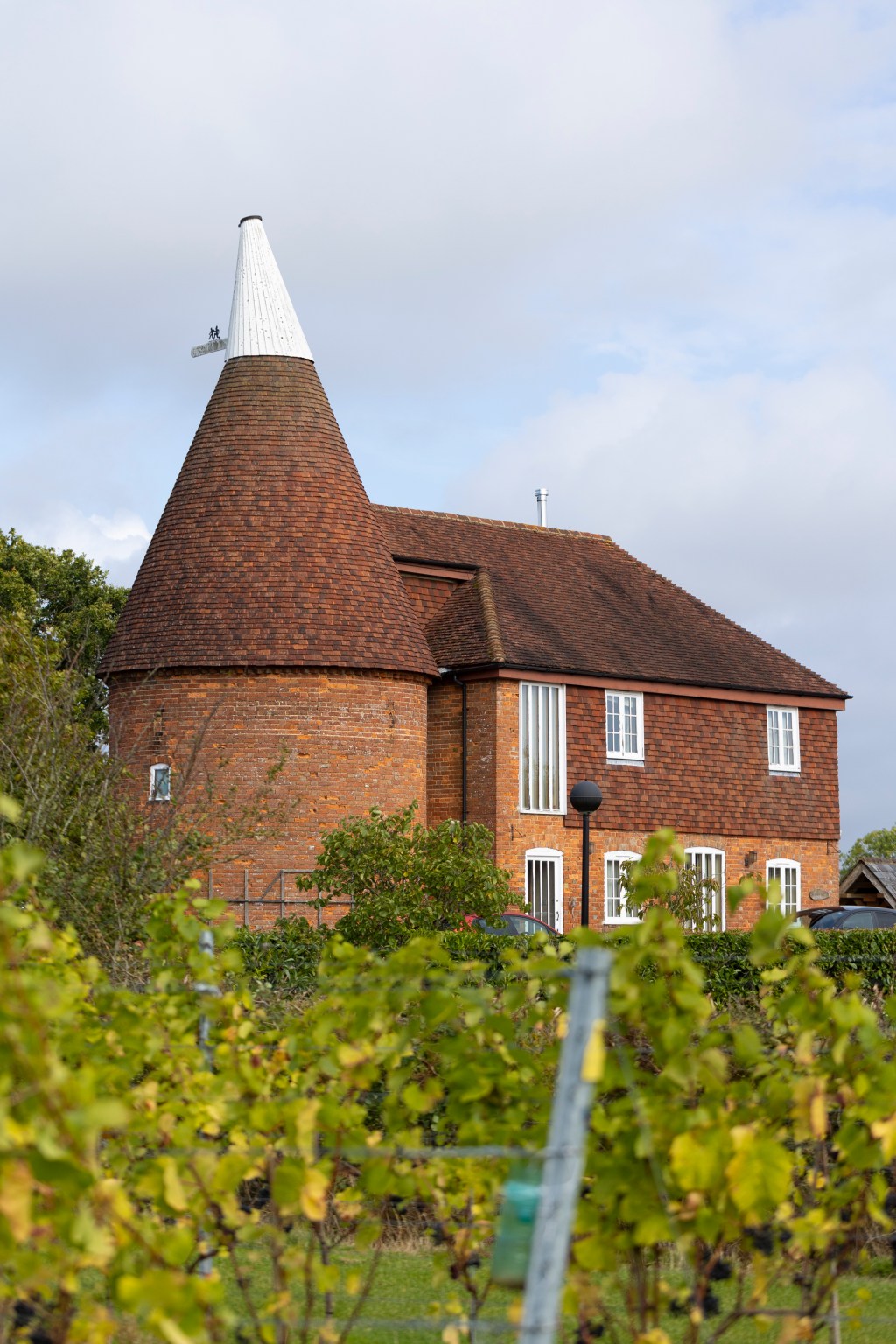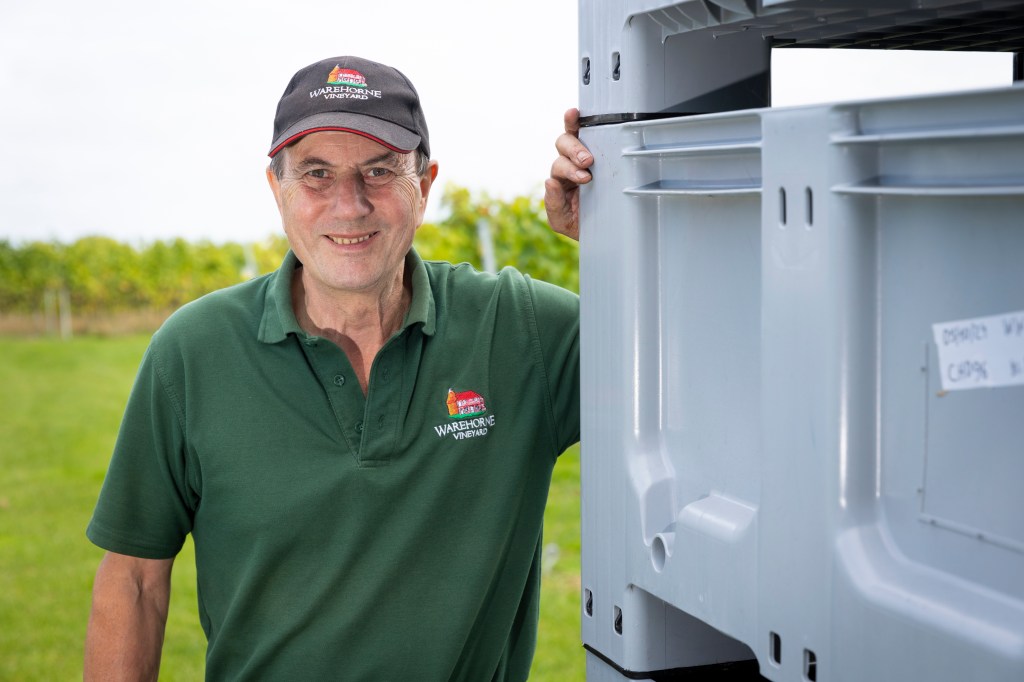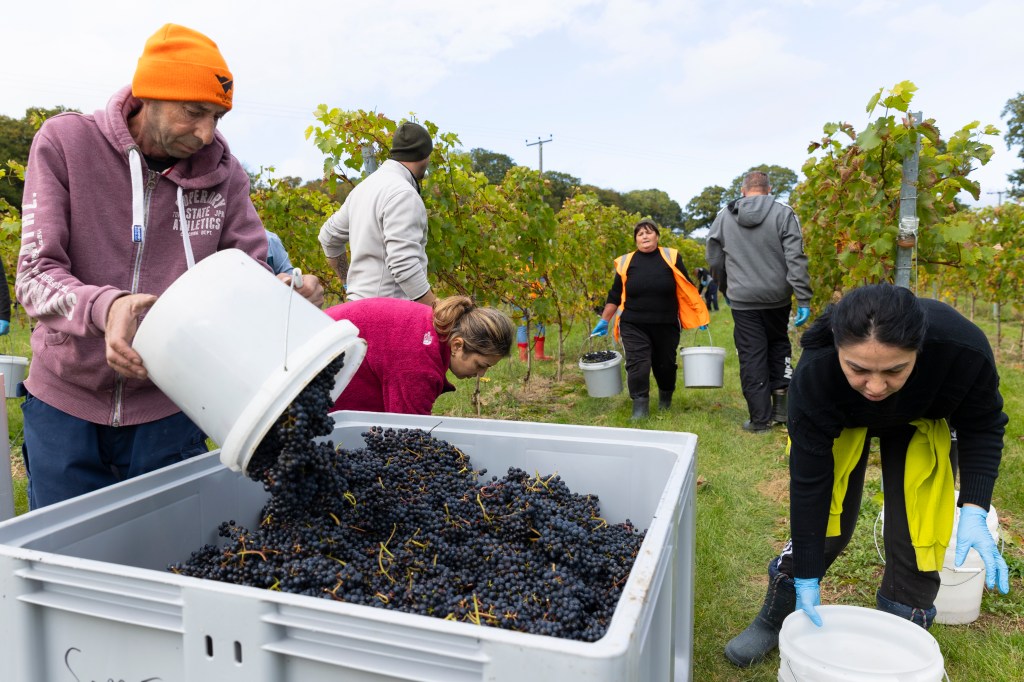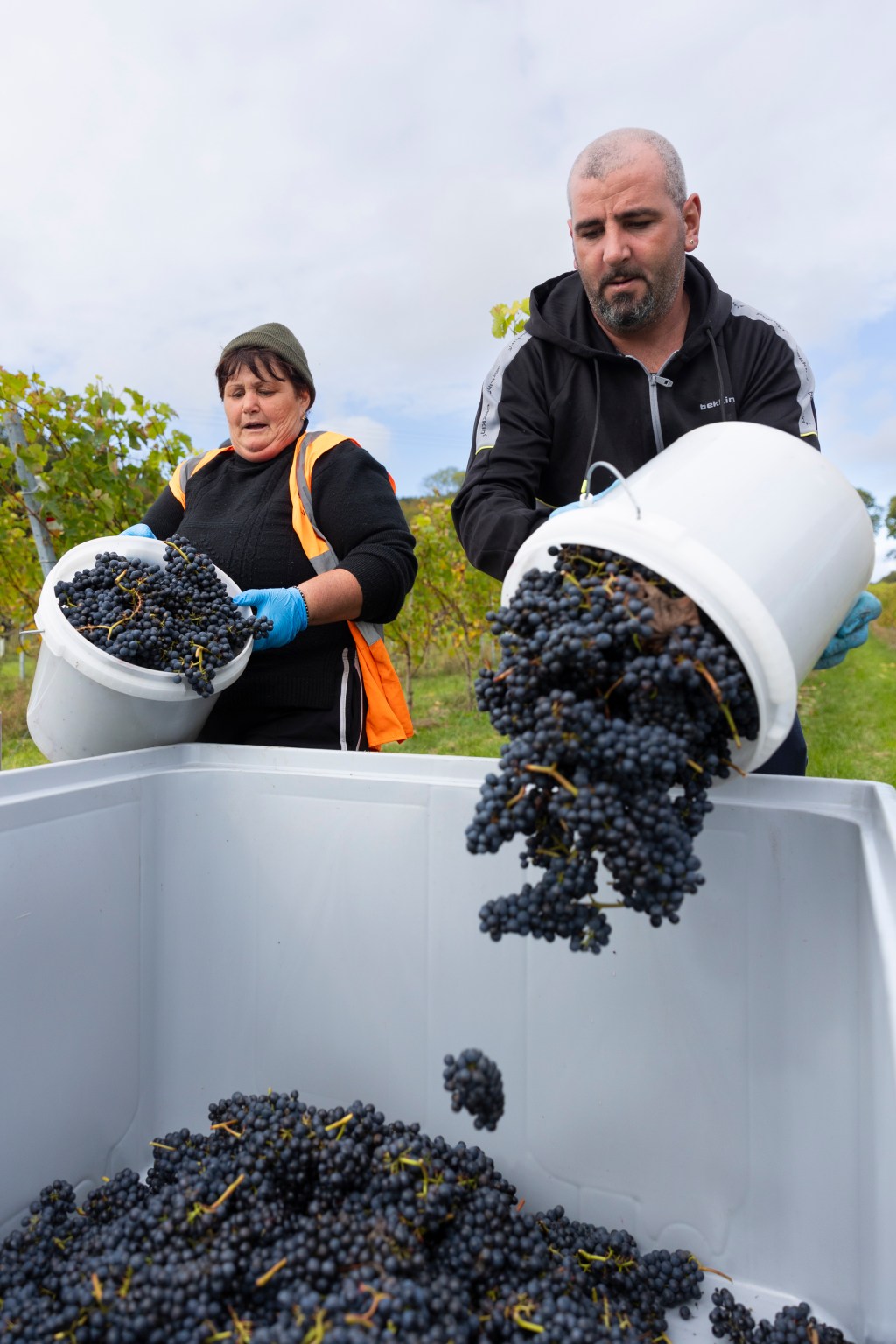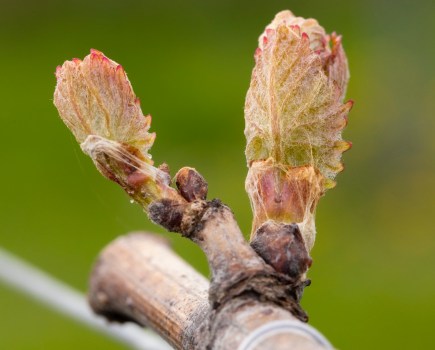Warehorne Vineyard however has depth and interest far beyond the cosmetic beauty of the site. In 2020 Peter Constable decided to plant vines on land that surrounded his family home, a former derelict oasthouse in the Kent countryside.
Peter said: “Twenty years ago the oasthouse was without electricity or water and we initially bought it with an acre of land from a sheep farmer.” Peter and his family became friends with the land owner and when a decision to sell the land was made the land owner offered the land to Peter. “The oasthouse was left over from the days when this land had been used to grow hops and although it had been a sheep farm for 99 years, if historically it had been used for hops I knew it would also be good for grape vines,” said Peter.
After many years spent thinking about the prospect of planting a vineyard Peter was able to purchase the necessary land and initially 15,250 vines were planted by S J Barnes.
This initial planting was predominantly Pinot Noir but also consisted of Chardonnay, Pinot Gris and Pinot Meunier. Interestingly this initial planting contained a small plot of 300 Divico vines. “I wanted to plant Piwi varieties but found it very difficult to source them, 300 was all I could get,” said Peter. “At that time I tried to go direct to the supplier in Switzerland but there was a language problem,” he added.
Peter always had the intention that Warehorne Vineyard would become known for producing English red wine, he explained: “Right from the beginning I wanted to make sure that we produced more red wine than white and rosé combined.”
In a country that is still considered a marginal climate for winemaking and with premium English sparkling wine gaining international recognition this determination for Warehorne to produce red wine seems at first glance both remarkable and brave. Peter’s explanation for this decision is both insightful and logical.
“In 2023 there were 21.6 million bottles produced with 76% of that being sparkling and 23% being still (of that 23% only 13% was red) with an additional 1% including products such as vermouth. So that means that red wine was only 2.99% of the overall production figure for the year,” he explained.
Peter works as a freelance IT consultant which has allowed the gradual organic expansion of the vineyard. “I have to work to pay for the planting, the trellising, the vines…it has been a continuous struggle,” he said.
Sitting in the late September sunshine surrounded by vines the struggle has certainly had benefits. “In 2021 I managed to plant 2,000 Caberet Noir vines and in 2022 8,000 more Divico vines were planted,” Peter said. All the vines are planted on a single guyot, Pendalbogen system with the arched style allowing for even growth.
Peter’s determination to realise his dream of planting Piwi red varieties once again saw him directly contact the supplier in Switzerland arranging for the importation of the vines himself. “This is currently believed to be the largest planting of Divico in either England or Wales, and 2024 is the first crop,” he added with a smile.
For the first crop from these 8,000 vines the results are impressive but Peter is not surprised as the initial 300 Divico vines planted in 2020 have given him experience to understand how this variety will perform on the site. “If they are cropping at 2kg a vine in the first year it will produce 4kg-5kg a vine in the next year,” said Peter. His analytical approach to the vineyard gives him a grasp of production figures that is truly impressive. “In their second season 300 vines produced 1.49 tonnes, averaging 5kg a vine,” he continued. For the first year to ensure the young vines are not stressed half of the bunches are removed. “The vines produce four bunches on each shoot so we removed half of the bunches.”
With both Caberet Noir and Divico growing on the site Peter is ideally placed to discuss the differences between these interesting Piwi varieties both from a flavour profile point of view and a viticulturist perspective. “I personally feel that Divico is a little bit fruitier than Caberet Noir but they are very different vines.
“Divico are extremely vigourous vines, a little bit late in starting with a tendency to grow sideways. If you do not continuously manage the growth the vines grow from one bay into another. The Divico vines also give an amazing amount of fruit.
“The first harvest of Caberet Noir took place in 2023 and 3.5 tonnes were harvested from 2000 vines so that was about 1.5kg per vine, which is still very good for a first harvest. I do think last year was a good harvest and levels are down this year. We are a young vineyard so it is difficult to look at what an average year would be but this year the vines have struggled to ripen the fruit. The leaves, bunches and berries are all smaller on the Caberet Noir than the Divico and the vines are very upright and the canopy on balance is slightly easier to maintain.”
As a Piwi variety the Divico vines have not suffered any fungal problems at all even in such a difficult growing season. “The bunches are very loose giving protection against Botrytis,” he explained. For preventative purposes there have been three sprays across the year, one at woolly bud stage, one in late July and one in September and the vines are looking lush, green and clean. This is in stark contrast to the traditional Pinot varieties that are on this site, “they are a constant fungal challenge,” said Peter.
Growing experience of these Piwi vines has also given Peter anecdotal evidence regarding Divico and its relationship to SWD. “This area was particularly affected by SWD in 2023. We have a Burgundy clone, Pinot Noir planted alongside our original 300 Divico vines. The Pinot Noir was hit by SWD, I sprayed as soon as I was aware but it had already caused damage and I lost six rows although I was able to contain it. The Divico was right next door and remained untouched, so the evidence suggests the SWD would have flown over the Divico to get to the Pinot Noir,” he said laughing. This is an interesting observation and may have many explanations. Peter’s theory is: “The Divico have very thick skins and from my experience are therefore less attractive to SWD I have also noticed that SWD like to attack the bunches from the middle rather than the outside so I think that the open bunches make it harder for the SWD to enter.”
Pests in the vineyard are not limited to SWD. In previous years wasps have been a problem and the vineyard has taken proactive steps to reduce wasp numbers and there are wasps visible in traps around the site. (It is interesting and encouraging to note that there have been no sightings at this vineyard of the invasive Asian Hornet.)
One pest that Peter has noticed are pheasants which wander into the vineyard from a local shoot and seem rather partial to the grapes but other birds are more of a problem and both kites and a bird scarer (sympathetically placed so as to cause very little noise nuisance to any neighbouring properties) are employed at the vineyard.
“There are power lines that go through the site and the starlings like to sit on them and eye up the fruit and they literally swoop down in their hundreds and gorge themselves for about thirty seconds, and then fly up again. In our first year we should have had about 1000kg from the Pinot Gris and after the birds had finished we had about 220kg left, they took 75% of the fruit,” he said.
To combat the starlings, Peter now nets the vines. Peter devised a roller system, utilising a UTV to drive the rows with the nets then clipped in place, that makes the process of netting easier but it is still too labour intensive to net all 25,000 vines. In another example of Peter’s logical approach, the fact that there are only a small number of Pinot Gris vines (1000) and considering their appeal to the resident starling population he made the decision that these are the vines that will be netted. “I can’t afford to lose any of the crop to bird predation,” he said.
There are rabbits and badgers “but the badgers are lazy they will only take the very low hanging fruit,” said Peter.
The vineyard has not suffered from a lack of labour availability at harvest and this year a 12 strong picking team supplied by VineWorks, efficiently harvested the Divico crop during the first week in October. The vineyard also has volunteer days at the weekends during harvest and this allows them to fully engage with the local community. Taking place on the weekend allows as many of the local community to get involved as possible and Peter spoke of the atmosphere created on these occasions.
Half of the grapes grown are sold under contract and this has allowed the small family business to fund the production of their own wines. Currently the wines are made by local winemaker Defined Wine in Canterbury under the brand name Oasthouse. “Defined Wine are the authority on making Divico wines,” said Peter.
The decision to separate the vineyard name from the brand was taken because Peter wanted to use something that immediately identified with Kent and south east England to ensure consumers could at a glance associate the wines with their geographic origin. There is also a wistful note in Peter’s voice when he talks about the oasthouse that he so lovingly turned from a derelict building into a family home that is now at the centre of a beautiful vineyard. It seems that the oasthouse and now the vineyard have become part of the family and it is therefore fitting that both should be linked together in the label for this range of wines.
The wines include a single varietal Divico which is a finalist for the Great British Food awards 2024, this is a competition that celebrates artisanal products. It is encouraging that this English red wine is attracting national attention especially since Divico is a less well known variety than Pinot Noir. Matthew Jukes has selected the wine for his masterclass at the Vineyard & Winery Show and the Divico and the Red Reserve will be available at the tasting hubs. So there will be plenty of opportunity for visitors to the Vineyard and Winery show to discover these English red wines for themselves.
“I really value awards but the red wines were bottled too late to be entered into the WineGB competition,” said Peter. The Red Reserve is a blend of 60% Divico and 40% Pinot Noir and there is also a 100% Pinot Noir. As the vineyard reaches full production in the next few years the production of red wine will extend to 50,000 bottles of red wine.
Peter and members of the family along with Andrew Trussell the vineyard assistant all conduct tours of Warehorne Vineyard for the public. Wine tour companies like our tour because we talk about the growth of the vineyard showing how the vines have been pruned over the years and how pruning decisions are made at year one and the following years. We explain about rootstock choices and then about varieties, we make it educational because we have found that people really want to learn something when they do a vineyard tour,” said Peter.
“Although there are a wide range of people who come on tours there are a significant number of the visitors to the vineyard that fall into the 25-35 age range, usually working professionals looking for interesting experiences. Ashford has great rail links to central London with a journey time of just over 35 minutes and so unsurprisingly many of the vineyard visitors come from the city. “Most of the visitors on the tours will buy wine, it is a very rare exception if someone does not buy wine from the cellar door.”
People on wine tours often specifically ask for the tours to include red wine. As the figures quoted earlier show there are not that many English red wines currently and “we are able to offer people three red wines. We are hoping to make a fourth red wine from Caberet Noir from the 2025 harvest.” The reaction of people taking part in the red wine tasting has given Peter encouragement. “The first thing people say when they try the Divico is: Wow I didn’t expect that.” Peter points to those consumers who like Malbec as those who particularly enjoy the Divico. This was one of the reasons Peter was initially keen to plant Divico as the variety was achieving levels of 15% abv in Switzerland.
Peter explained that on the tours he gives the story of Divico as a Piwi grape that is good for the English and Welsh wine industry as it is suited to our climate. Whilst Peter is committed to Piwi as a “game changer” for English and Welsh wine he looks to these varieties as an addition to the traditional not a replacement.
A new tasting room was opened on site in August 2024 and commands an elevated position offering fabulous views across the vines. Like everything at Warehorne vineyard there are already future plans for the space which include kitchen facilities and a balcony that will bring the guests such close proximity to the vines it will feel like you could reach out and touch them.
Initially Peter had considered planting a vineyard as a project that would keep him busy. “I dread retirement so now I have made sure I will never retire,” he said laughing.
Peter and his family have definitely embraced the vineyard and Peter and his son Seb, who is an analytical chemist, have both taken the oenology course at Plumpton. Although Seb works full time he still uses his skills in the vineyard. “He came home last night and was doing TA analysis in the barn (the hard way),” said Peter. “He will eventually be the winemaker and we are looking forward to the future when we can work together in the vineyard,” he added with warmth in his voice. Other family members have been involved in building the website.
Peter and his family have plenty of plans for the future and the main aim is to fund an onsite winery and there is already a suitable building which could be used for this purpose. A winery combined with the possibility of machine harvesting the red grapes would mean that the fruit would move into tank within hours.
At Warehorne vineyard unique decisions have been made and whilst these decisions have a logical foundation they have been taken with a passion for good wine and a love of the land. There is so much that this vineyard has to offer both now and moving forward, Warehorne Vineyard is a place where the future does not just look rosy… it looks like a very good red.
- Peter Constable
Pictures: ©Martin Apps, Countrywide Photographic
For more like this, sign up for the FREE Vineyard newsletter here and receive all the latest viticulture news, reviews and insight

